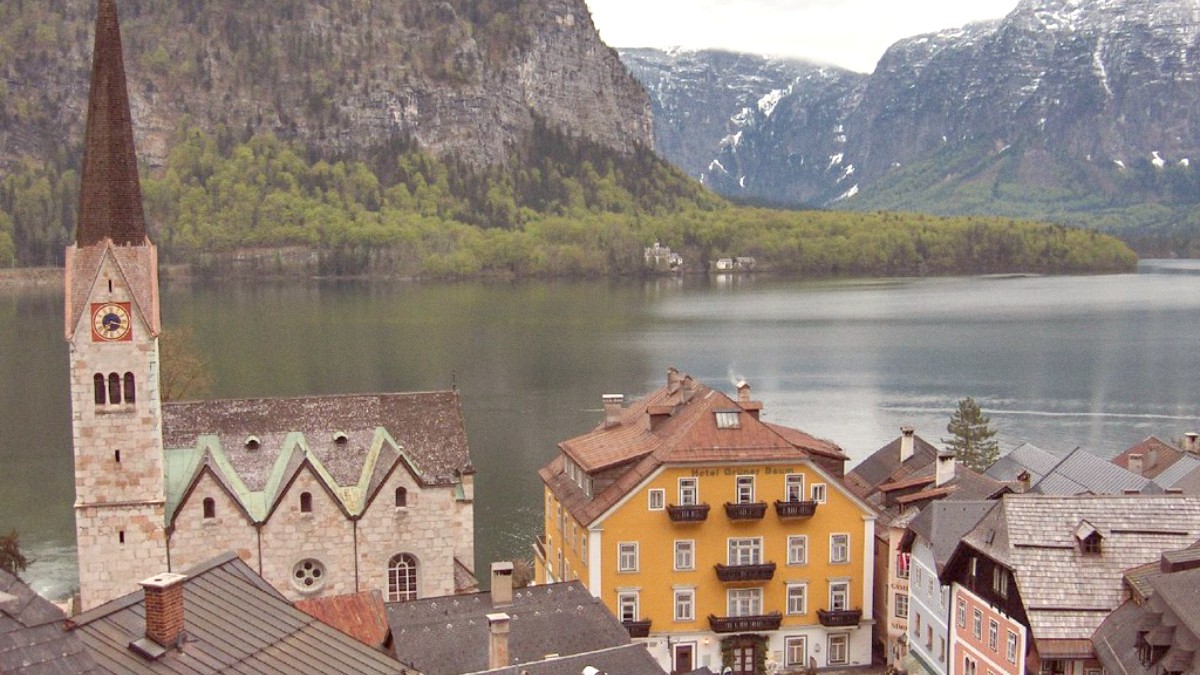
Salzkammergut, Austria
Hallstatt sits on the southwestern shore of Lake Hallstatt, known locally as Hallstätter See. This village is part of Upper Austria's Salzkammergut region, an area known for its many lakes and mountains. The village itself rests between the lake and the impressive Dachstein mountains, part of the Northern Limestone Alps. Its location, approximately 47.5617° N latitude and 13.6493° E longitude, places it deep within a truly alpine environment.
Hallstatt's history spans thousands of years, making it one of Europe's oldest continuously inhabited settlements. This long history stems from rich salt deposits deep within the mountains. Salt was a precious commodity, drawing early settlers.
Archaeological finds from the 19th century, including a vast prehistoric cemetery and a salt mine, offer a view into the past. These discoveries shaped the "Hallstatt Culture" (800-450 BC). This Iron Age civilization was sophisticated, with advanced tools and intricate jewelry unearthed. The culture's influence spread across Europe, underscoring Hallstatt's role as an early economic and cultural hub.
For millennia, salt mining sustained the village's economy and shaped its architecture. Miners extracted salt from the mountain, transporting it down to the lake and then across to other regions. This industry created wealth and maintained the community through centuries.
The village's isolated location contributed to its unique character. Until the late 19th century, people reached Hallstatt mainly by boat or narrow mountain paths. This limited access helped maintain its traditional appearance and slower pace of life, shielding it from rapid modernization.
Extensive salt deposits attract early settlers.
Hallstatt Culture flourishes, Iron Age civilization.
Archaeological discoveries reveal prehistoric finds.
Access mainly by boat or mountain paths, preserving character.
UNESCO World Heritage site, popular tourist destination.
Today, visitors explore the Hallstatt Salt Mine (Salzwelten Hallstatt), the world's oldest, to understand this deep history. The long history, from the Iron Age to the present, brings a layer of depth to Hallstatt beyond its picturesque appearance. Every alleyway, every old building, and even the salt in local dishes carries a piece of this ancient story.
Boat rides on the lake offer views back at the village, demonstrating its dramatic position. Walks along the shore path show different perspectives of the surrounding mountains. The air feels crisp and clean, carrying the scent of pine and fresh water. This natural setting creates chances for outdoor pursuits.
This combination of lake, village, and mountains forms the Hallstatt-Dachstein/Salzkammergut Cultural Landscape, an UNESCO World Heritage site. This designation safeguards the area for its exceptional natural beauty and its long history of human interaction with the environment, specifically through salt mining.
Hallstatt is a blend of natural beauty, ancient history, and charming village life. It invites visitors to slow down, explore its corners, and appreciate its enduring appeal.
Hallstatt, a picturesque village, earns wide recognition for its stunning alpine and lakeside scenery. As an UNESCO World Heritage site, it welcomes many visitors yearly, drawn by its beauty and unique atmosphere.
The village offers a compact layout, making exploration on foot easy. Most areas are pedestrianized, maintaining its peaceful character. The following attractions contribute to Hallstatt's appeal:
A viewing platform with panoramic vistas of the village, lake, and mountains. A spectacular elevated perspective.
The world's oldest salt mine. Guided tours enter the mountain, revealing salt extraction history through interactive exhibits and miners' slides.
An ossuary displaying hundreds of painted skulls, a centuries-old tradition due to limited burial space. A compelling insight into local customs.
The village itself draws attention, with its tightly packed, colorful houses built along the lake's edge and up the steep slopes. Exploring the narrow alleys, discovering small courtyards, and admiring timber-framed buildings forms a significant part of the Hallstatt experience.